
Boudhanath: The Spiritual Heart of Kathmandu
Explore Boudhanath in Kathmandu: A blend of spiritual serenity, rich culture, and vibrant local life centered around the majestic Boudhanath Stupa.
Boudhanath, located in the bustling city of Kathmandu, Nepal, is a sanctuary of peace and spirituality amidst the urban chaos. The centerpiece of this neighbourhood is the awe-inspiring Boudhanath Stupa, one of the largest stupas in the world and a UNESCO World Heritage Site. The stupa's massive mandala makes it one of the largest spherical stupas in Nepal and a significant pilgrimage site for Buddhists from around the globe. As you stroll around the stupa's circular path, you'll notice the harmonious blend of ancient traditions and modern life. Monks in maroon robes chant prayers while locals and tourists spin prayer wheels and light butter lamps. The air is filled with the soothing sound of Tibetan music and the aroma of incense, creating an atmosphere of tranquility. Boudhanath is also home to numerous monasteries, each with its unique architecture and spiritual significance. Visitors can attend meditation sessions, participate in rituals, or simply observe the serene monastic life. The neighbourhood is dotted with charming shops selling traditional Tibetan crafts, thangka paintings, and souvenirs, making it a great place to pick up unique mementos. Food enthusiasts will enjoy the variety of eateries offering both local and international cuisine. Don't miss out on trying momos, a popular local dumpling, at one of the rooftop cafes with stunning views of the stupa. Whether you seek spiritual enlightenment, cultural immersion, or simply a peaceful retreat, Boudhanath promises an unforgettable experience.
Local tips in Boudhanath
- Visit early in the morning or late afternoon to avoid crowds and enjoy a more peaceful atmosphere.
- Dress modestly and respectfully, especially when visiting monasteries and participating in rituals.
- Take your time walking around the stupa in a clockwise direction, following the local custom.
- Bring a good camera to capture the stunning architecture and vibrant street scenes.
- Try the local Tibetan butter tea at one of the many cafes for an authentic experience.
Boudhanath: The Spiritual Heart of Kathmandu
Boudhanath, located in the bustling city of Kathmandu, Nepal, is a sanctuary of peace and spirituality amidst the urban chaos. The centerpiece of this neighbourhood is the awe-inspiring Boudhanath Stupa, one of the largest stupas in the world and a UNESCO World Heritage Site. The stupa's massive mandala makes it one of the largest spherical stupas in Nepal and a significant pilgrimage site for Buddhists from around the globe. As you stroll around the stupa's circular path, you'll notice the harmonious blend of ancient traditions and modern life. Monks in maroon robes chant prayers while locals and tourists spin prayer wheels and light butter lamps. The air is filled with the soothing sound of Tibetan music and the aroma of incense, creating an atmosphere of tranquility. Boudhanath is also home to numerous monasteries, each with its unique architecture and spiritual significance. Visitors can attend meditation sessions, participate in rituals, or simply observe the serene monastic life. The neighbourhood is dotted with charming shops selling traditional Tibetan crafts, thangka paintings, and souvenirs, making it a great place to pick up unique mementos. Food enthusiasts will enjoy the variety of eateries offering both local and international cuisine. Don't miss out on trying momos, a popular local dumpling, at one of the rooftop cafes with stunning views of the stupa. Whether you seek spiritual enlightenment, cultural immersion, or simply a peaceful retreat, Boudhanath promises an unforgettable experience.
Iconic landmarks you can’t miss
Buddha Stupa
Discover the serenity of the Buddha Stupa, a UNESCO World Heritage site in Kathmandu, where spirituality and culture intertwine beautifully.

Swayambhu Buddha Park - Ring Road
Discover the scenic beauty and rich cultural heritage of Swayambhu Buddha Park, a serene retreat in the heart of Kathmandu.

Taragaon Next
Explore the artistic heartbeat of Kathmandu at Taragaon Next, a contemporary art museum that celebrates creativity and cultural exchange.

BUDDHA PARK Boudhanath
Explore the serene beauty of Buddha Park in Boudhanath, where stunning statues and rich cultural heritage await your discovery.

Shechen Monastery
Experience the serene beauty and rich traditions of Shechen Monastery, a must-visit Buddhist sanctuary in the heart of Kathmandu, Nepal.

Boudha Stupa Thanka Centre
Explore the vibrant art scene at Boudha Stupa Thanka Centre, where traditional craftsmanship meets contemporary creativity in the heart of Kathmandu.

Kumari Chaur Park
Discover tranquility in the heart of Kathmandu at Kumari Chaur Park, a perfect escape for nature lovers and urban explorers alike.

Boudhanath Stupa
Explore the spiritual heart of Kathmandu at Boudhanath Stupa, a UNESCO World Heritage Site adorned with Tibetan culture and rich traditions.

Boudha Farmers Market
Explore the vibrant Boudha Farmers Market in Kathmandu for fresh produce, handmade crafts, and an authentic taste of Nepalese culture.

Guru Lhakhang Monastery
Explore the serene beauty and spiritual heritage of Guru Lhakhang Monastery in Kathmandu, a must-visit destination for cultural enthusiasts.

Kathmandu
Explore the spiritual heart of Kathmandu at Boudhanath Stupa, a UNESCO World Heritage Site rich in history and culture.

Unmissable attractions to see
Swoyambhu Mahachaitya
Explore the sacred Swoyambhu Mahachaitya, a UNESCO World Heritage site, and experience the spiritual heart of Kathmandu with stunning views and rich history.

Taragaon Next
Discover the vibrant art and cultural heritage of Nepal at Taragaon Next, an inspiring museum in the heart of Kathmandu's Boudha area.

BUDDHA PARK Boudhanath
Discover the tranquility of Buddha Park in Boudhanath, a lush retreat offering stunning views of Boudhanath Stupa and a peaceful escape in Kathmandu.

Shechen Monastery
Discover the serene Shechen Monastery in Kathmandu, a spiritual haven that immerses visitors in Buddhist traditions and stunning architecture.

Mrigasthali
Discover the tranquil beauty of Mrigasthali, a nature sanctuary in Kathmandu offering stunning landscapes and cultural richness.

Himalaya Discovery
Discover the breathtaking beauty and rich culture of the Himalayas at Himalaya Discovery, a premier tourist attraction in Kathmandu.

Essential places to dine
Sky Cafe Boudha
Discover delicious fast food at Sky Cafe Boudha while enjoying breathtaking views of Kathmandu's iconic stupa.
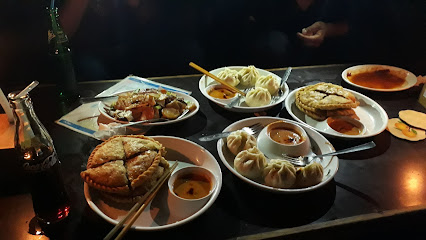
Patio 747
Experience authentic Nepalese flavors blended with global cuisine at Patio 747 in Kathmandu's vibrant dining scene.

Mechung Restro & Bar
Experience authentic Tibetan flavors at Mechung Restro & Bar in Kathmandu – a culinary journey through tradition and taste.

Pho 99
Experience authentic Vietnamese flavors at Pho 99 in Kathmandu's vibrant Boudhha district.

La Casita Boudhanath
Experience authentic Spanish cuisine at La Casita Boudhanath, where flavors meet cultural charm in the heart of Kathmandu.

Sichuan Cafe Restaurant
Discover authentic Chinese and Tibetan cuisine at Sichuan Cafe Restaurant in Kathmandu – where every dish tells a story.

Food House Cafe
Discover family-friendly dining at Food House Cafe in Kathmandu; enjoy delicious meals in a warm atmosphere perfect for travelers.
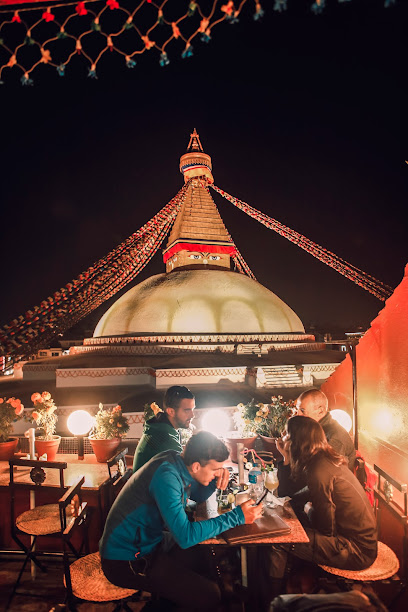
Rox Restaurant
Experience authentic Italian cuisine at Rox Restaurant in Boudha, Kathmandu - where flavor meets elegance.

Stupa View Restaurant
Experience authentic Tibetan cuisine with stunning views at Stupa View Restaurant in Boudhha, Kathmandu.

Little Szechwan Restaurant
Experience authentic Szechwan flavors at Little Szechwan Restaurant in Boudhha, Kathmandu - where culinary tradition meets modern dining.
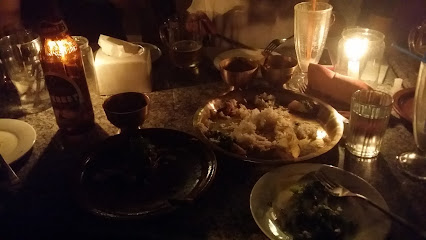
Markets, malls and hidden boutiques
Lotus Handicrafts | Craft Nepal
Discover exquisite craftsmanship and unique gifts at Lotus Handicrafts, the heart of artisanal Nepalese culture in Kathmandu.

UFO Boudha
Discover a vibrant clothing store in Kathmandu offering stylish apparel for all ages in a warm, culturally rich atmosphere.
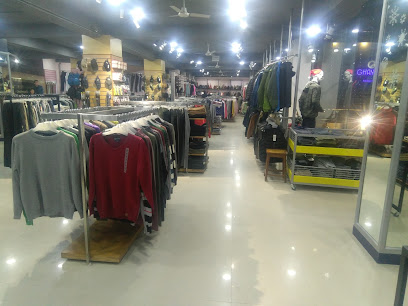
Unique Collection.Boudha Fulbari Chowk
Explore authentic Nepali fashion at Unique Collection in Boudha Fulbari Chowk, Kathmandu, where tradition meets contemporary style.

Weekend
Discover the vibrant fashion scene at Weekend in Kathmandu, where unique styles and local trends await every visitor.

Diki Store
Discover vibrant and authentic Nepali fashion at Diki Store in Boudhha, Kathmandu, where tradition meets contemporary style.

MaGnet AttracTion iN fAsHiOn,BoUDdhA tUsAl
Explore unique fashion at MaGnet AttracTion in Boudhha, Kathmandu - a fusion of traditional and contemporary styles waiting for you.

New Boudha Handicraft
Discover the rich heritage of Nepal through exquisite handcrafted items at New Boudha Handicraft, a must-see in Kathmandu.

Boudha gifts and accesories
Explore Boudha Gifts and Accessories for unique handcrafted treasures and authentic souvenirs in the heart of Kathmandu, Nepal.
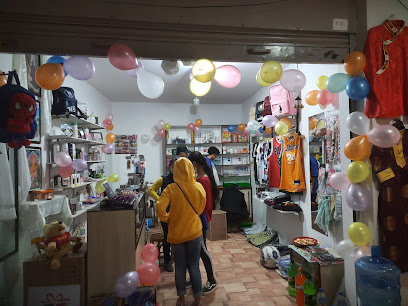
Unique store boudha
Explore Unique Store Boudha in Kathmandu for the finest collection of traditional and contemporary clothing, showcasing Nepal's rich culture and craftsmanship.

Gadhimai Fancy Store
Explore unique fashion at Gadhimai Fancy Store near Boudha Stupa, where local culture meets contemporary style in Kathmandu.

Essential bars & hidden hideouts
Triple-Double Lounge & Bar
Discover the lively ambiance and diverse drink selection at Triple-Double Lounge & Bar in the heart of Kathmandu, perfect for unwinding after exploring.

Chill Bar
Discover Chill Bar in Boudhha, Kathmandu – a perfect blend of relaxation, great drinks, and vibrant nightlife.

Shishaz House And Bar
Experience the vibrant culture of Kathmandu at Shishaz House And Bar, where traditional flavors meet modern comfort in a welcoming pub atmosphere.

Wild House Lounge And Bar
Experience the vibrant nightlife of Kathmandu at Wild House Lounge And Bar, where delightful dishes and refreshing drinks await in a cozy atmosphere.

Rowdy Lounge Boudha
Experience the vibrant ambiance and delightful cuisine at Rowdy Lounge Boudha in Kathmandu, your perfect retreat near the iconic Boudhanath Stupa.

Phulbari Pool House
Experience the thrill of sports in a vibrant atmosphere at Phulbari Pool House, the ultimate sports bar in Kathmandu.

J pub boudha
Experience the vibrant nightlife at J Pub Boudha, a lively bar in Kathmandu offering a delightful selection of drinks and a cozy atmosphere.

Boudha Bar
Experience the vibrant nightlife of Kathmandu at Boudha Bar, where locals and travelers unwind in a lively atmosphere with diverse drink options.

Connections Bar And Grill
Discover the lively atmosphere at Connections Bar And Grill in Boudhha, Kathmandu, offering a delightful blend of local and international cuisine.

ROKPA Sunset Lounge Bar
Discover tranquility at ROKPA Sunset Lounge Bar, where refreshing drinks meet stunning sunset views in the heart of Boudhha, Kathmandu.

Local Phrases
-
- Helloनमस्ते
[namaste] - Goodbyeफेरि भेटौं
[feri bhetau] - Yesहो
[ho] - Noहोइन
[hoin] - Please/You're welcomeकृपया
[kripya] - Thank youधन्यवाद
[dhanyabad] - Excuse me/Sorryमाफ गर्नुहोस्
[maaf garnuhos] - How are you?तपाईंलाई कस्तो छ?
[tapailai kasto chha?] - Fine. And you?ठिक छ। र तिमी?
[thik chha. ra timi?] - Do you speak English?तिमीले अंग्रेजी बोल्छौ?
[timile angreji bolchhau?] - I don't understandमैले सम्झिन
[maile samjhin]
- Helloनमस्ते
-
- I'd like to see the menu, pleaseकृपया मेनू हेर्न चाहन्छु
[kripya menu hern chahanchu] - I don't eat meatम मासु खाँदिन
[ma masu khandin] - Cheers!चिअर्स!
[chears!] - I would like to pay, pleaseकृपया भुक्तानी गर्न चाहन्छु
[kripya bhuktani garin chahanchu]
- I'd like to see the menu, pleaseकृपया मेनू हेर्न चाहन्छु
-
- Help!मदद!
[madad!] - Go away!दूर हुँदै जाओ!
[dur hundai jao!] - Call the Police!प्रहरीलाई बोलाउनुहोस्!
[praharilai bolaunuhos!] - Call a doctor!डाक्टरलाई बोलाउनुहोस्!
[daktarlai bolaunuhos!] - I'm lostम गुमाएको छु
[ma gumaeko chu] - I'm illम अस्वस्थ छु
[ma asvasth chu]
- Help!मदद!
-
- I'd like to buy...म खरीदन चाहन्छु...
[ma kharidna chahanchu...] - I'm just lookingम सिर्जन गर्न गएको छु
[ma sirjan garn gaeko chu] - How much is it?यो कति हो?
[yo kati ho?] - That's too expensiveयो धेरै महँगो छ
[yo dherai mahango cha] - Can you lower the price?के तपाईं मुल्य कम गर्न सक्नुहुन्छ?
[ke tapain mulya kam garn saknuhunchha?]
- I'd like to buy...म खरीदन चाहन्छु...
-
- What time is it?कति बजे छ?
[kati baje cha?] - It's one o'clockएक बजे छ
[ek baje cha] - Half past (10)दस बजे अर्को आधा
[das baje arko aadha] - Morningबिहान
[bihan] - Afternoonदिउँसो
[diunso] - Eveningसाँझ
[sanh] - Yesterdayहिजो
[hijo] - Todayआज
[aaj] - Tomorrowभोलि
[bholi] - 1एक
[ek] - 2दुई
[dui] - 3तीन
[tin] - 4चार
[char] - 5पाँच
[paanch] - 6छ
[chha] - 7सात
[saat] - 8आठ
[aath] - 9नौ
[nau] - 10दस
[das]
- What time is it?कति बजे छ?
-
- Where's a/the...?... कहाँ छ?
[... kaha cha?] - What's the address?ठेगाना के हो?
[thegana ke ho?] - Can you show me (on the map)?के तपाईं मलाई देखाउन सक्नुहुन्छ?
[ke tapain malai dekhaun saknuhunchha?] - When's the next (bus)?अर्को (बस) कहिले छ?
[arko (bas) kahile cha?] - A ticket (to ....)एक टिकट (.... लाई)
[ek ticket (.... lai)]
- Where's a/the...?... कहाँ छ?
History of Boudhanath
-
Boudhanath, one of the largest stupas in Nepal, has its roots tracing back to the 5th century AD. It is believed to have been built shortly after the arrival of Buddhism in the Kathmandu Valley, making it a significant religious site for both local and Tibetan Buddhists. The stupa's design symbolizes the universe and serves as a focal point for meditation and prayer.
-
During the Licchavi period (approximately 400-750 AD), Boudhanath saw substantial development as a Buddhist pilgrimage site. The Licchavi kings, who ruled over the Kathmandu Valley, were known for their support of Buddhist architecture. They contributed to the construction and expansion of the stupa, solidifying its importance in the cultural and religious landscape of the region.
-
The 14th century marked a significant turning point for Boudhanath with the influx of Tibetan refugees fleeing from political unrest in Tibet. This migration brought a new wave of Tibetan culture and traditions, which enriched the neighborhood's cultural fabric. The establishment of monasteries and the introduction of Tibetan Buddhist practices transformed Boudhanath into a vibrant center of Tibetan Buddhism in Nepal.
-
In the 20th century, particularly after the 1950s, Boudhanath gained prominence as a major pilgrimage site. The area attracted thousands of pilgrims and tourists alike, leading to economic growth and the establishment of numerous guesthouses, shops, and monasteries. The stupa became a symbol of peace and spirituality, attracting not only local visitors but also international travelers seeking spiritual solace.
-
The devastating earthquake that struck Nepal in April 2015 caused significant damage to the Boudhanath stupa and surrounding structures. The local community, along with international organizations, rallied to restore the stupa and preserve its cultural heritage. Restoration efforts highlighted the resilience of the Boudhanath community and reinforced the site's status as a UNESCO World Heritage Site.
Boudhanath Essentials
-
Boudhanath is easily accessible from various neighborhoods in Kathmandu. The most common way is to take a taxi or a ride-sharing service, which typically takes about 30-45 minutes depending on traffic. From Thamel, you can also take a local bus to Boudhanath; several routes operate in this direction. For a more adventurous option, consider a bicycle ride, which allows you to enjoy the scenery along the way.
-
Boudhanath is a pedestrian-friendly area, making it easy to explore on foot. The main stupa and surrounding shops and cafes are all within walking distance. There are no trains or subways, and while public buses are available, they are less common in this neighborhood. Taxis and motorbike taxis can be hired for trips outside Boudhanath. Renting a bicycle is also an option for those wishing to explore the area further.
-
Boudhanath is generally safe for tourists, but standard precautions should be taken. Avoid walking alone at night, especially in less populated areas. While violent crime is rare, petty theft can occur, particularly in crowded places. Watch your belongings and be cautious of your surroundings. High-crime areas targeting tourists are not specifically noted, but it is wise to remain vigilant.
-
In case of an emergency, dial 100 for police assistance or 102 for ambulance services in Nepal. Local hospitals and medical clinics are available nearby, such as the Boudhanath Hospital. It is advisable to have travel insurance that covers medical emergencies. For minor health issues, pharmacies are located within Boudhanath, where you can find over-the-counter medications.
-
Fashion: Do dress modestly when visiting religious sites; avoid shorts and sleeveless tops. Religion: Do show respect by walking clockwise around the stupa and refrain from loud behavior. Public Transport: Do give up your seat for elderly passengers if using local transport. Don’t eat or drink in religious spaces. Greetings: Do greet locals with 'Namaste' and a slight bow. Eating & Drinking: Do try local Tibetan cuisine, especially momos. Don’t refuse food offers, as it can be seen as impolite.
-
To experience Boudhanath like a local, visit the stupa during early morning or late afternoon when it is less crowded. Join the locals in their kora (circumambulation) around the stupa. Explore the smaller alleyways for hidden cafes and shops selling authentic Tibetan crafts. Attend a local festival if your visit coincides with one, as they are vibrant and culturally rich. Engaging with local monks and shopkeepers can also lead to interesting conversations and insights about the area.
Nearby Cities to Boudhanath
-
Things To Do in Patan
-
Things To Do in Bhaktapur
-
Things To Do in Nagarkot
-
Things To Do in Gorkha
-
Things To Do in Bandipur
-
Things To Do in Chitwan
-
Things To Do in Namche Bazaar
-
Things To Do in Pokhara
-
Things To Do in Patna
-
Things To Do in Lumbini
-
Things To Do in Darjeeling
-
Things To Do in Siliguri
-
Things To Do in Gangtok
-
Things To Do in Varanasi
-
Things To Do in Paro








